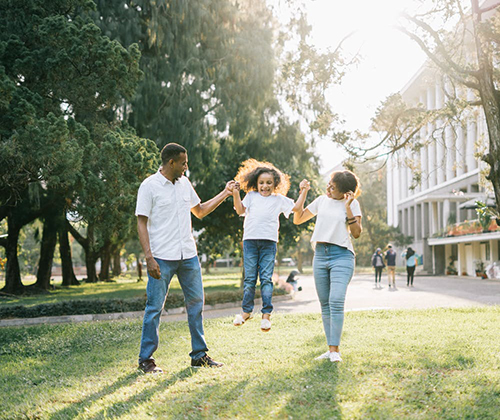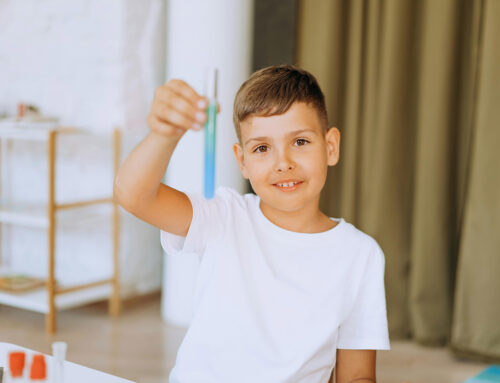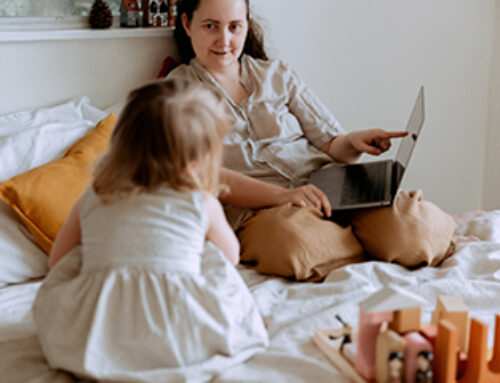Air travel is a form of travel in vehicles such as helicopters, hot air balloons, blimps, gliders, hang gliders, parachutes, airplanes, jets, or anything else that can sustain flight. For airplanes, it’s all about defying gravity. Gravity is the invisible force that keeps us (and everything else) from flying off the Earth. So when it comes to designing an airplane, it’s all about defying this heavy force.
Our bodies can also have a momentary state of weightlessness during movement that defies gravity. Any movement that brings our feet off the ground, our bodies are exploring space. Our relationship to gravity is our most important sense of security and is linked to our vestibular system. If your child has a fear of swinging, avoids escalators and elevators and becomes fearful with any change in head position, such as when being tilted backwards or upside-down during roughhousing, then he or she may be gravitationally insecure.
At Home:
If your child has gravitational insecurity, take it slow. Try a swing that allows your child’s feet to touch the ground, or hold him or her in your lap on a swing so they feel more secure during motion. Try distracting them with play and imagination during challenging activities. Sometimes adding weight, like a weighted backpack, helps a child feel more secure. Allow increased time for new ‘scary’ activities, and help your child gradually engage activities he/she sees as threatening.

Exploring gravity with your child through crafts:
Today, airplanes are an integral part of our lives. We see them in the sky and we use them both to travel and play. Airplane crafts are super fun for kids to make and they have the added bonus of being able to play with them afterwards, too!
Experiments that explore gravity for young ones:
- Defy Gravity – This super cool activity is easy to make with paperclips and magnets. (Buggy and Buddy)
- Galaxy in a Bottle – The glitter doesn’t fall down, but instead rises as it settles. Crazy! (One Little Project)
- Gravity Splatter Art – What happens when you drop something with paint on it?
- Exploring Gravity with a Tube – Why does the position of the tube change the speed of the car? (HOAWG)
- Exploring Gravity with Balance – Learn how to make a craft stick stand up right on a chopstick. (Rookie Parenting)
- Gravity with a Pendulum – Learn about the forces of motion and gravity by placing paint in swinging pendulum.
- Pool Noodle Gravity Play – Explore gravity and slope by making your own pool noodle marble run. (Little Bins)
The vestibular system is thought to be the primary organizer of sensory information. With a system that acts as it should, the constant pull of gravity generates a constant sensory flow in which all other sensory inputs are superimposed upon. This system is in charge of reacting to every change in head position, and is interdependent on other sensory systems to give us an idea of where our body is in relation to space. Support your little one as they continue to explore the world around them and how their body feels against gravity!

Blue Bird Day fosters socialization, sensory regulation, and pre-academic learning in children ages 2-7 years in therapeutic rotations that simulate preschool and kindergarten settings. Our compassionate therapists practice a relationship-based and family-centered approach, provide parent training, and collaborate on goals and individualized intensive treatment plans for your child.
We believe in a collaborative and multi-disciplinary team approach to therapy. A team of occupational therapists, speech-language pathologists, dietitians, developmental therapists, behavioral therapists, physical therapists, and therapeutic assistants are created for each child to ensure child and family are fully supported and the best possible results are achieved.
Options for individualized, group and virtual therapy sessions are available as well.
Want to learn more or you have a specific question? Feel free to connect with us here!



